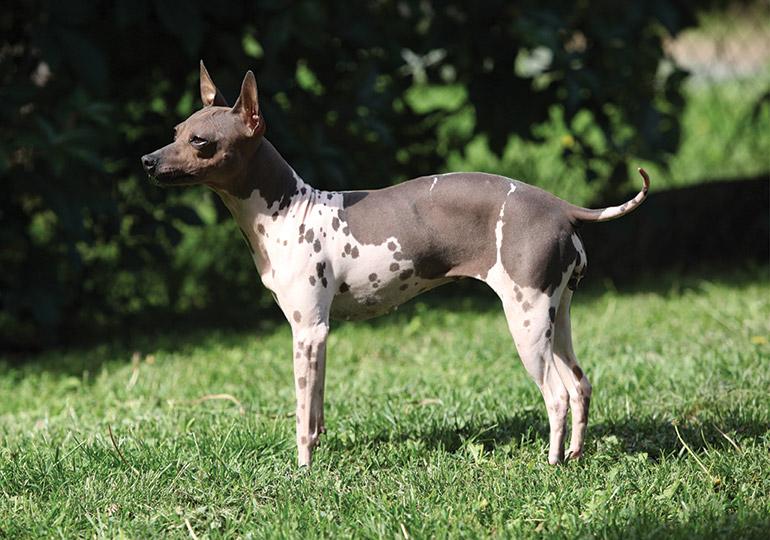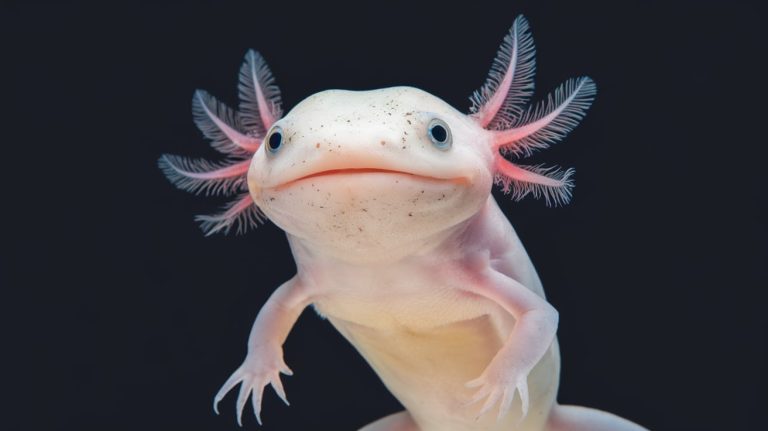17 Popular Hairless Animals Around the World

When you think of animals, you often picture furry creatures. But not all animals have hair! Some are smooth, shiny, and totally bald. These hairless wonders are unique and eye-catching.
I’m here to show you the world of hairless animals. In this post, I’ll take you on a tour of over 17 popular hairless creatures from around the globe.
You’ll learn about their special features, where they live, and why they look like they do.
From wrinkly dogs to smooth cats and even some surprising wild species, these hairless creatures will make you see the animal kingdom in a whole new light.
Get ready to meet some of nature’s most unusual animals.
List of Hairless Animals to Explore
1. Sphynx Cat

The Sphynx cat originated in Canada and is known for its lack of fur, large ears, and wrinkled skin, giving it a distinct look.
Its scientific name is Felis catus, and it has a lifespan of 13-15 years.
- Habitat: Domestic, prefers warm indoor environments.
- Diet: High-protein cat food, including both wet and dry food.
- Why They’re Fascinating: Despite their lack of fur, Sphynx cats are known for being friendly, playful, and affectionate.
2. Xoloitzcuintli (Mexican Hairless Dog)

The Xoloitzcuintli, or Mexican Hairless Dog, is one of the world’s oldest and rarest dog breeds. Originating in Mexico, it has smooth skin and an athletic build.
Its scientific name is Canis lupus familiaris, and it can live for 12-15 years.
- Habitat: Domestic, thrives in warm climates.
- Diet: Balanced dog food with protein-rich ingredients.
- Why They’re Fascinating: Revered in ancient Aztec culture, they are known for their loyalty and protective instincts.
3. Skinny Pig

The Skinny Pig is a nearly hairless breed of guinea pig that originated in a laboratory in the 1970s. Its wrinkled skin and small patches of hair make it distinct.
Its scientific name is Cavia porcellus, and it has a lifespan of 5-7 years.
- Habitat: Domestic, kept as pets in warm, draft-free environments.
- Diet: Vegetables, hay, and vitamin C-rich foods.
- Why They’re Fascinating: They have unique grooming habits due to their lack of fur, making them low-maintenance in terms of shedding.
4. Naked Mole Rat

Native to East Africa, the Naked Mole Rat is a small, hairless rodent known for its pink, wrinkled skin.
Its scientific name is Heterocephalus glaber, and it can live for an impressive 30 years.
- Habitat: Underground tunnels in desert environments.
- Diet: Tubers and plant roots.
- Why They’re Fascinating: Naked mole rats are eusocial mammals, similar to ants, living in colonies with a single breeding queen.
5. Peterbald Cat

The Peterbald cat is a hairless breed originating in Russia in the 1990s. It has a sleek, muscular body and large ears.
Its scientific name is Felis catus, and it has a lifespan of 12-14 years.
- Habitat: Domestic, best suited to warm homes.
- Diet: High-quality commercial cat food.
- Why They’re Fascinating: Their appearance can vary, with some being completely hairless while others have a fine coat.
6. American Hairless Terrier

The American Hairless Terrier, a breed developed in the United States, has smooth, hairless skin that requires minimal grooming.
Its scientific name is Canis lupus familiaris, and its lifespan is 14-16 years.
- Habitat: Domestic, comfortable in warmer climates.
- Diet: High-protein dog food with essential vitamins.
- Why They’re Fascinating: They are one of the few completely hairless dog breeds, making them hypoallergenic.
7. Bald Uromastyx

The Bald Uromastyx is a type of lizard found in Northern Africa and the Middle East. It has leathery, hairless skin and a spiny tail.
Its scientific name is Uromastyx aegyptia, and it has a lifespan of 15-20 years.
- Habitat: Arid deserts and rocky environments.
- Diet: Vegetation, including leaves and flowers.
- Why They’re Fascinating: Their ability to survive in harsh desert climates makes them unique among reptiles.
8. Leopard Gecko

Native to the Middle East and India, the Leopard Gecko is a small, hairless reptile with soft, leathery skin.
Its scientific name is Eublepharis macularius, and it has a lifespan of 10-15 years.
- Habitat: Arid and semi-arid environments.
- Diet: Insects like crickets and mealworms.
- Why They’re Fascinating: Unlike many other lizards, Leopard Geckos lack adhesive pads on their feet, making them ground-dwellers.
9. Naked Viscacha Rat

The Naked Viscacha Rat is a hairless rodent found in Argentina with smooth skin and a rat-like appearance.
Its scientific name is Octomys mimax, and it has a lifespan of 3-5 years.
- Habitat: Rocky deserts of South America.
- Diet: Seeds and plants.
- Why They’re Fascinating: Its ability to thrive in a harsh, arid environment makes this rat a marvel of adaptation.
10. Axolotl

The Axolotl, also known as the Mexican walking fish, is a hairless amphibian that retains its juvenile aquatic form throughout life.
Its scientific name is Ambystoma mexicanum, and it can live for 10-15 years.
- Habitat: Freshwater lakes in Mexico.
- Diet: Worms, small fish, and insects.
- Why They’re Fascinating: Axolotls are capable of regenerating limbs, spinal cord, and even parts of their heart and brain.
11. Manatee

Manatees, sometimes called sea cows, are large, hairless aquatic mammals with smooth, wrinkled skin.
Their scientific name is Trichechus, and they have a lifespan of 40-60 years.
- Habitat: Warm, shallow coastal waters and rivers.
- Diet: Seagrasses and aquatic plants.
- Why They’re Fascinating: Despite their size, manatees are gentle giants that spend much of their day grazing underwater.
12. Dolphin

Dolphins are sleek, hairless marine mammals known for their intelligence and smooth bodies adapted for swimming.
Their scientific name is Delphinidae, and they can live for 20-50 years depending on the species.
- Habitat: Oceans and coastal waters worldwide.
- Diet: Fish and squid.
- Why They’re Fascinating: Dolphins are highly social and display advanced behaviors such as problem-solving and communication.
13. Greater Bulldog Bat

The Greater Bulldog Bat, native to Central and South America, is a large, hairless bat with a dog-like face.
Its scientific name is Noctilio leporinus, and it can live up to 20 years.
- Habitat: Coastal areas near rivers and lakes.
- Diet: Fish and aquatic insects.
- Why They’re Fascinating: These bats use echolocation to detect ripples in the water created by fish, allowing them to fish while flying.
14. Corn Snake

The Corn Snake, found in the southeastern United States, is a hairless reptile with smooth, shiny skin.
Its scientific name is Pantherophis guttatus, and its lifespan is 10-20 years.
- Habitat: Forests, grasslands, and rocky hills.
- Diet: Rodents, birds, and amphibians.
- Why They’re Fascinating: Corn snakes are non-venomous and are popular as pets due to their docile nature.
15. Vulture

Vultures, particularly the Old World species, are large birds with bald heads, evolved to stay clean while feeding.
Their scientific name is Accipitridae, and they live for 10-30 years depending on the species.
- Habitat: Open plains, savannas, and mountainous regions.
- Diet: Carrion.
- Why They’re Fascinating: Their bald heads help them avoid bacterial infections when feeding on carcasses.
16. Bald Ibis

The Bald Ibis is a striking, hairless-headed bird found in parts of Africa and the Middle East.
Its scientific name is Geronticus eremita, and it has a lifespan of 15-20 years.
- Habitat: Dry, semi-arid areas and coastal cliffs.
- Diet: Insects, small reptiles, and seeds.
- Why They’re Fascinating: Once on the brink of extinction, conservation efforts have helped revive their populations.
17. Hairless Chinese Crested Dog

The Hairless Chinese Crested Dog is a small, playful breed with smooth, hairless skin except for tufts of fur on its head and tail.
Its scientific name is Canis lupus familiaris, and it can live for 13-15 years.
- Habitat: Domestic, prefers warm climates.
- Diet: High-quality commercial dog food.
- Why They’re Fascinating: Their distinctive appearance and friendly personality make them a favorite among dog lovers.
Conclusion
Who knew there were so many hairless animals out there? From the wrinkly Sphynx cat to the smooth-skinned naked mole rat, these creatures show us how varied nature can be.
I hope this tour of hairless animals has opened your eyes to the world’s less furry side. These unique creatures teach us that beauty comes in all forms.
Some are pets, others live in the wild, but all have found ways to thrive without fur.
What do you think about these hairless wonders? Do you have a favorite? I’d love to hear your thoughts! Leave a comment below and share which hairless animal caught your eye.
Remember, there’s always more to learn about the animal kingdom.
Keep Exploring!






